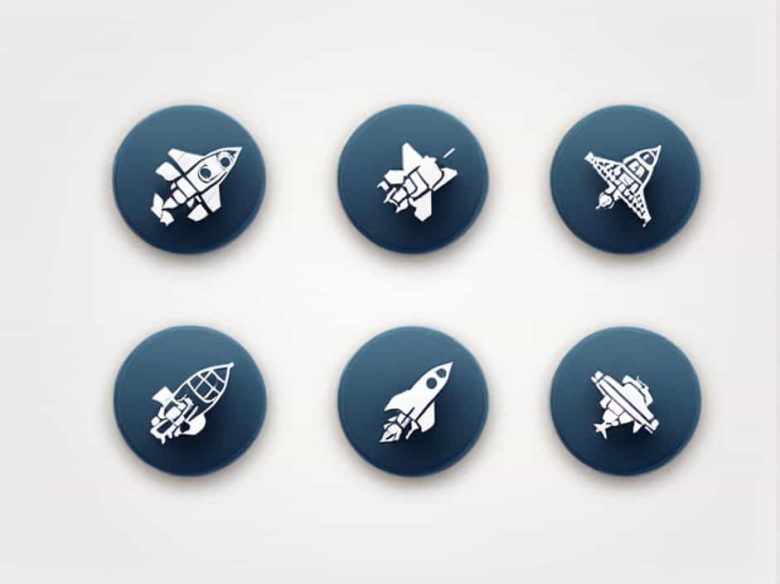Engineering plays a crucial role in aircraft and spacecraft development but many people are unsure about the distinction between aerospace engineering and astronautical engineering. While these fields are closely related they focus on different aspects of flight and space exploration.
Aerospace engineering is a broad discipline that covers both aircraft (aviation) and spacecraft (space exploration). Astronautical engineering on the other hand is a specialized branch of aerospace engineering that focuses exclusively on the design and development of space vehicles and systems.
Understanding the key differences between these fields is essential for anyone interested in pursuing a career in aviation space travel or engineering.
What Is Aerospace Engineering?
Aerospace engineering is the broad field of engineering that focuses on the design development testing and production of aircraft spacecraft satellites and missiles. It combines principles of mechanical electrical and computer engineering to create advanced flight systems.
Key Areas of Aerospace Engineering
Aerospace engineering is divided into two main subfields:
- Aeronautical Engineering – Deals with the study design and development of aircraft that operate within Earth’s atmosphere (e.g. commercial airplanes fighter jets helicopters).
- Astronautical Engineering – Focuses on the design and development of spacecraft that operate beyond Earth’s atmosphere (e.g. rockets satellites space probes).
Aerospace engineers work on a wide range of projects including:
- Designing commercial and military aircraft.
- Developing satellite communication systems.
- Enhancing flight efficiency and aerodynamics.
- Improving propulsion systems such as jet engines and rocket motors.
Aerospace engineering is a diverse and dynamic field covering both atmospheric and space flight technologies.
What Is Astronautical Engineering?
Astronautical engineering is a specialized branch of aerospace engineering that focuses exclusively on the design development and testing of spacecraft and related technologies. This field is often referred to as ‘rocket science’ because it deals with the complex physics and engineering required for space exploration.
Key Areas of Astronautical Engineering
Astronautical engineers work on projects related to:
- Rocket propulsion systems (solid liquid and hybrid fuel engines).
- Orbital mechanics (the movement of objects in space).
- Satellite design and deployment.
- Space station and deep-space exploration technologies.
- Re-entry and landing systems for spacecraft.
This field is essential for advancements in human spaceflight interplanetary missions and satellite communications.
Key Differences Between Aerospace and Astronautical Engineering
While astronautical engineering is a subset of aerospace engineering there are important differences in their focus applications and required skill sets.
1. Scope and Focus
- Aerospace Engineering covers both aircraft and spacecraft design.
- Astronautical Engineering focuses solely on spacecraft and space technologies.
2. Operating Environment
- Aerospace Engineers work with systems that operate within Earth’s atmosphere (planes drones) and in space (rockets satellites).
- Astronautical Engineers specialize in spacecraft that operate only in outer space dealing with zero gravity radiation and extreme temperatures.
3. Career Opportunities
- Aerospace engineers can work in aviation defense and space exploration industries.
- Astronautical engineers primarily work in space agencies (NASA ESA) private space companies (SpaceX Blue Origin) and satellite manufacturers.
4. Technical Challenges
- Aerospace engineers face challenges related to aerodynamics fuel efficiency and flight safety.
- Astronautical engineers deal with microgravity vacuum conditions extreme temperatures and long-duration space travel.
5. Engineering Principles Used
| Factor | Aerospace Engineering | Astronautical Engineering |
|---|---|---|
| Focus | Aircraft & Spacecraft | Spacecraft Only |
| Environment | Atmosphere & Space | Space Only |
| Key Technologies | Jet engines aerodynamics | Rocket propulsion orbital mechanics |
| Challenges | Lift drag fuel efficiency | Vacuum conditions radiation exposure |
| Career Fields | Aviation defense space | Space exploration satellites |
Career Paths in Aerospace and Astronautical Engineering
Both fields offer exciting career opportunities in various industries. Here’s a look at some possible career paths:
Aerospace Engineering Careers
- Aircraft Design Engineer – Works on designing and improving commercial and military airplanes.
- Flight Systems Engineer – Focuses on aerodynamics propulsion and avionics.
- Aviation Safety Engineer – Ensures aircraft meet safety regulations and efficiency standards.
- Defense and Military Engineer – Works on fighter jets surveillance drones and missile systems.
Astronautical Engineering Careers
- Rocket Propulsion Engineer – Develops engines and fuel systems for spacecraft.
- Satellite Systems Engineer – Designs and manages communication weather and GPS satellites.
- Mission Control Engineer – Monitors and controls spacecraft during missions.
- Spacecraft Structural Engineer – Works on the design of spacecraft bodies heat shields and landing systems.
Education and Skills Required
Educational Requirements
To become an aerospace or astronautical engineer students typically need:
✔ A Bachelor’s Degree in Aerospace Engineering Mechanical Engineering or related fields.
✔ A Master’s or Ph.D. for advanced research roles in space exploration.
✔ Specialized courses in aerodynamics propulsion materials science and orbital mechanics.
Essential Skills
Both fields require strong knowledge of:
✔ Mathematics and Physics – Understanding flight dynamics propulsion and materials science.
✔ Computer-Aided Design (CAD) – Using software like ANSYS MATLAB and AutoCAD for simulations.
✔ Problem-Solving and Critical Thinking – Designing efficient and safe flight systems.
✔ Programming – Learning languages like Python C++ and MATLAB for simulations and automation.
Which Field Should You Choose?
If you are passionate about aircraft drones and aviation aerospace engineering is the best choice. If you dream of working on rockets satellites and space missions astronautical engineering is the better path.
Here’s a quick guide to help you decide:
✔ Choose Aerospace Engineering if:
- You want to work on aircraft helicopters and drones.
- You are interested in aviation defense and aerodynamics.
- You enjoy working with jet engines fluid dynamics and aircraft design.
✔ Choose Astronautical Engineering if:
- You are passionate about space exploration rockets and satellites.
- You want to work at NASA SpaceX or satellite companies.
- You are fascinated by orbital mechanics propulsion and space travel challenges.
Aerospace and astronautical engineering are closely related but serve different purposes. Aerospace engineering is a broad field covering both aircraft and spacecraft while astronautical engineering is a specialized branch focusing exclusively on spacecraft and space exploration.
Both fields offer exciting career opportunities in aviation defense and space exploration. Whether you dream of designing the next-generation airplane or sending a spacecraft to Mars these engineering disciplines provide the skills and knowledge to shape the future of flight and space travel.



